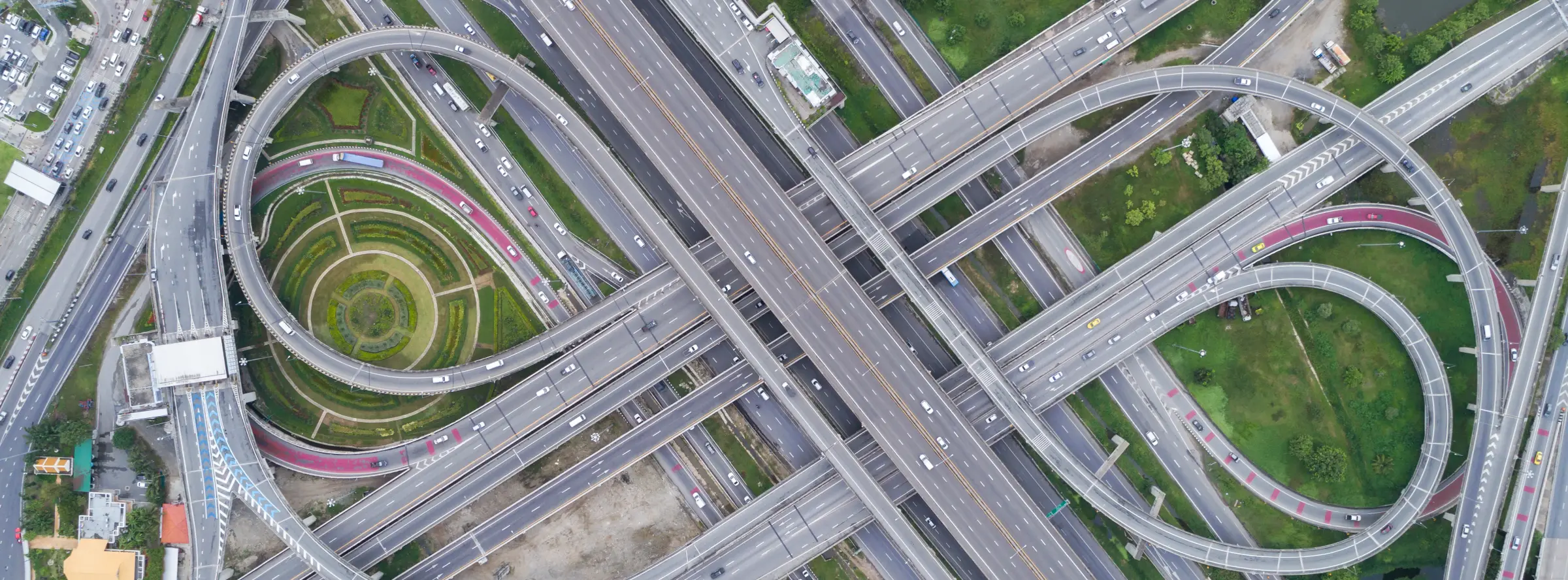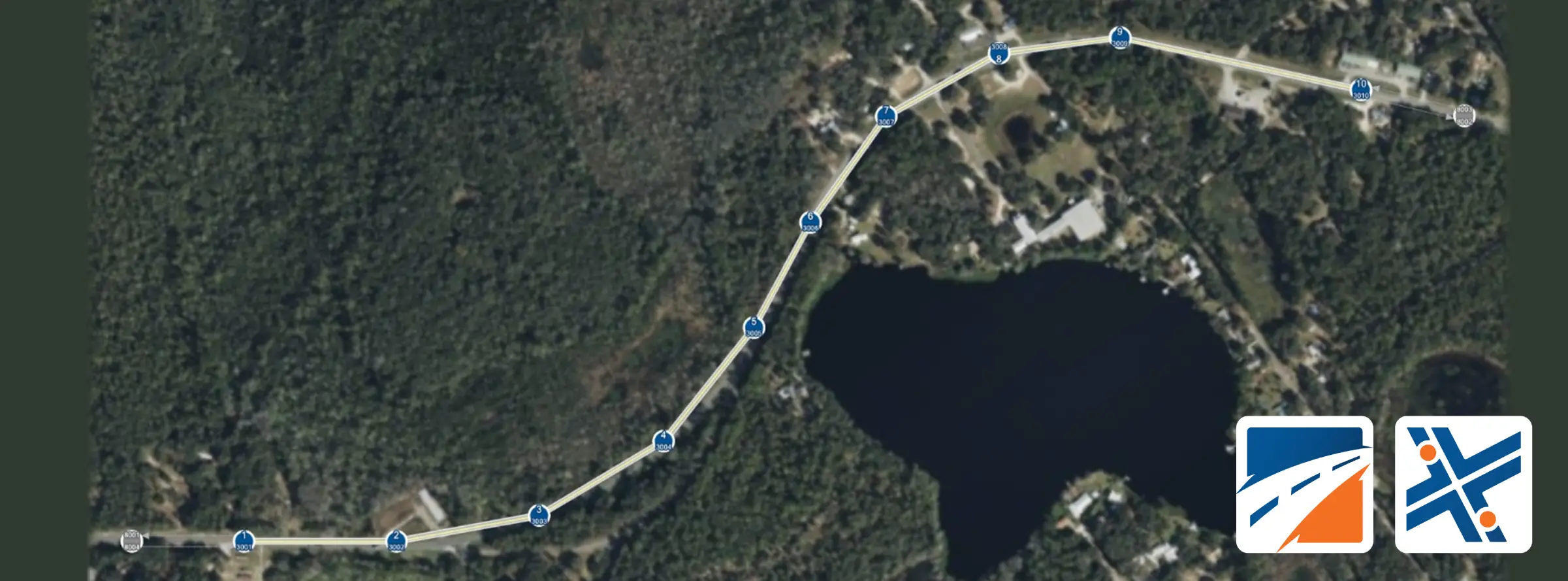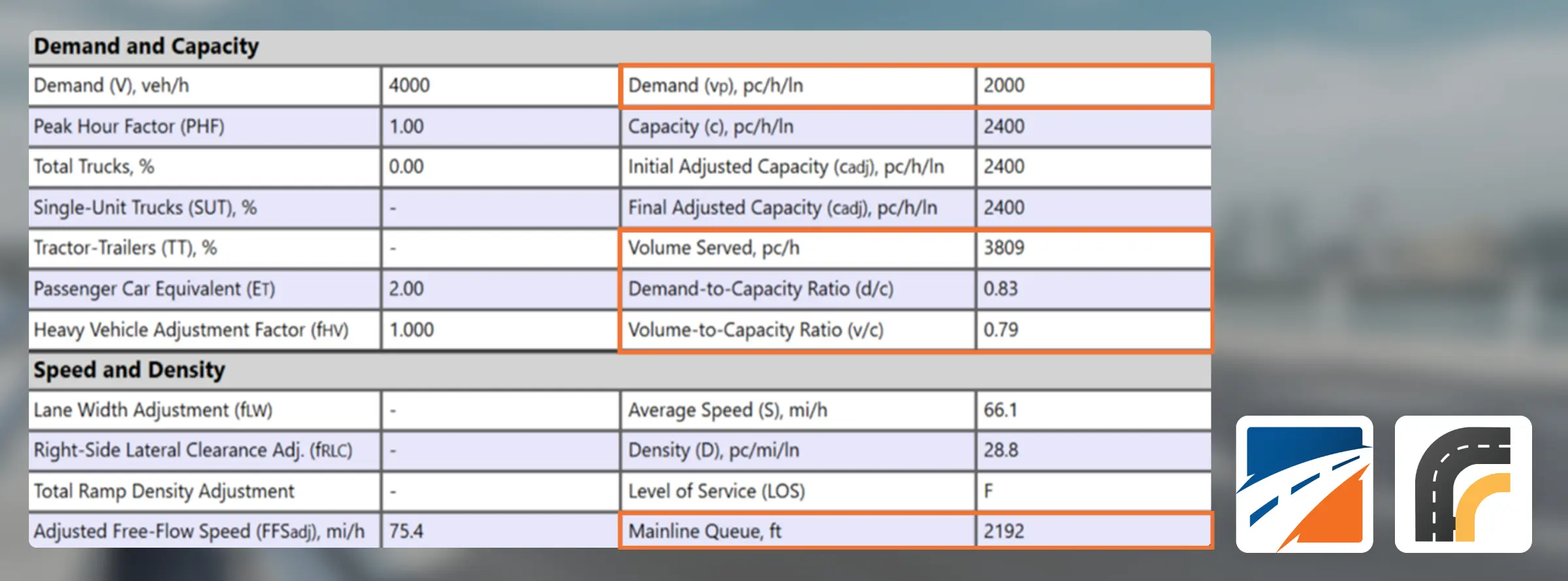A freeway overlap segment occurs when a merge and a diverge segment are closely spaced so their 1,500 ft influence areas overlap. This article will discuss the Highway Capacity Manual guidance to model this segment type and cover some common modeling issues that are not well covered by the HCM.
When Does an Overlap Segment Exist?
According to the Highway Capacity Manual, ramp segments have an influence area of 1,500 ft from the gore point, as shown below:

Influence areas of Merge and Diverge Segments
The HCM segmentation process for freeways assigns a typical length of 1,500 ft to merge and diverge segments, based on their ramp influence area. Therefore, when adjacent ramps are less than 3,000 ft apart, their influence areas overlap. The HCM provides the following equations to compute the lengths of the overlap, merge and diverge segments:
If L < 3,000 ft:
- Overlap length: 3,000 – L
- Merge and diverge lengths: L – 1,500
Where
- L: gore-to-gore distance between ramps (ft)
The figure below illustrates how segment lengths are computed for two ramps located 2,000 ft apart:
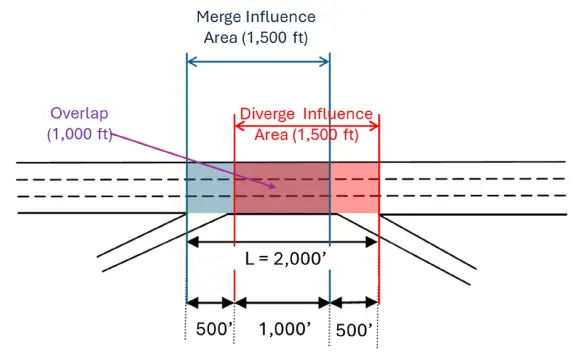
Closely-spaced ramps with an overlap
By using the HCS Freeway Map Segmentation tool, the HCM segmentation rules are automatically applied, and overlaps are created when adjacent ramps exist – read more details about this feature here. The HCM analysis framework recommends assigning the worst LOS between the upstream merge and the downstream diverge to the subject overlap.
Issue 1 – Compatibility with acceleration/deceleration lanes
When the ramp segments have longer acceleration or deceleration lanes, they may not be compatible with the calculated length of the merge/diverge segment. An internal HCS check restricts ramp segments to have an acceleration/deceleration lane length longer than the segment length, resulting in an error.
In the example below, the ramps are located 2,300 ft apart. When the HCM equations are applied, the following segment lengths are computed:

Ramps located 2,300 ft apart
However, these lengths will produce an error since the merge acceleration lane (1,300 ft) cannot be longer than the segment length (800 ft):
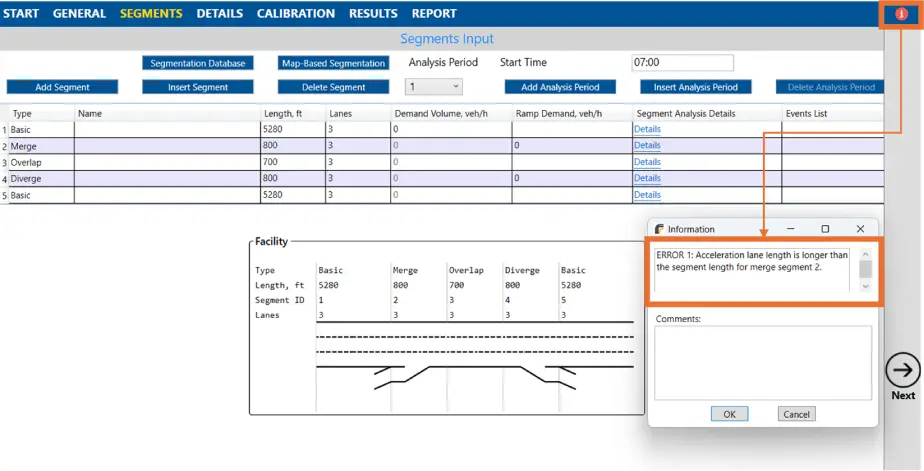
Error message when the acceleration lane is longer than the computed merge segment length
When that occurs, it is necessary to increase the length of the segment in error to be at least equal to its acceleration/deceleration lane, reducing the corresponding difference from the overlap segment. A warning message will be displayed about the sum of segments not corresponding to 1,500 ft, but it can be ignored as no impact is expected in the analysis results:

Adjusted segment lengths to address length error
Issue 2 – Overlap shorter than 300 ft
Certain geometric configurations may result in an overlap segment with a computed length shorter than 300 ft. If this occurs, the analysis results may be inaccurate in the case of oversaturated conditions.

Overlap segment with computed length < 300 ft
The methodology for oversaturated conditions, described in HCM Chapter 25 (Freeway Facilities Supplemental), requires a minimum segment length of 300 ft to adequately evaluate traffic shockwaves – a warning message will be provided in HCS if that occurs.

Warning message – segments shorter than 300 ft
If no oversaturated conditions occur in the segment, this warning may be ignored since there will be no impacts on the analysis results. However, if there is congestion, this issue must be addressed as it can significantly affect the accuracy of the results. In this case, it is suggested that the adjacent merge and diverge segments be shortened until the overlap can have a minimum length of 300 ft.
